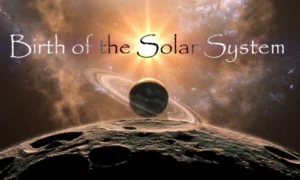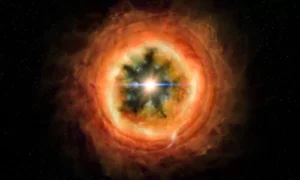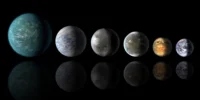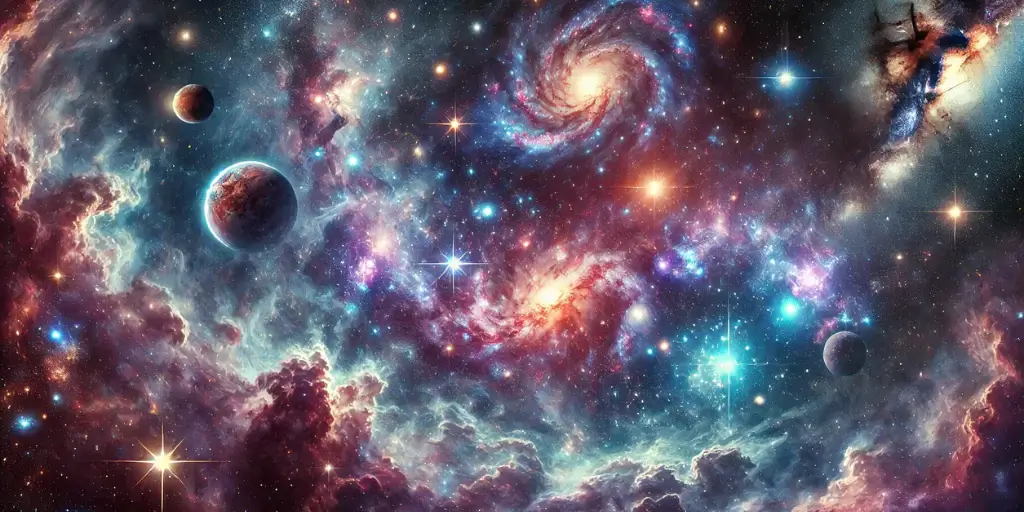Most people think they understand how the sun formed, but the science behind it is both simpler and more mind-blowing than they realise. Ever looked up at that blazing ball of fire in the sky and wondered, “Where did you come from, anyway?” The sun—this ordinary yet extraordinary star that makes life on Earth possible—has quite the origin story.
This guide breaks down the sun formation process into bite-sized explanations that won’t require a PhD in astrophysics to understand. No jargon, no complicated formulas—just the fascinating cosmic tale of how our solar system’s star came to be.
And wait until you hear about the sun’s unexpected “siblings” that formed alongside it—they’re not where anyone would think to look.
1. The Birth of Our Solar System

A. The Giant Molecular Cloud: Where It All Began
Our sun’s story started about 4.6 billion years ago in a giant molecular cloud. This massive cosmic cloud contained hydrogen, helium, and traces of heavier elements floating in the vastness of space. These clouds are incredibly cold, typically minus 263 degrees Celsius, yet they serve as stellar nurseries throughout our galaxy.
B. Gravitational Collapse: The First Step in Sun Formation
Over time, something disturbed this peaceful cloud – perhaps a nearby supernova explosion. Parts of the cloud began to collapse under their own gravity, creating a denser region at the centre. As material fell inward, it began spinning faster (like an ice skater pulling in their arms), forming a flattened disk with the proto-sun at its centre.
2. Inside the Solar Nebula

A. Understanding Gas and Dust Composition
The solar nebula was largely composed of hydrogen and helium, with trace amounts of heavier elements such as carbon, oxygen, and silicon. These materials were not evenly distributed—denser regions began to form where gravity pulled more matter together. Consider cosmic dust bunnies steadily becoming larger in specific areas of space.
B. The Role of Angular Momentum in Sun Formation
Similar to how ice skaters spin faster when they pull up their arms, the nebula started to revolve more quickly as it compressed. This rotation prevented all material from falling directly into the centre. Instead, while most mass gathered in the middle to form our sun, the spinning motion caused the remaining material to flatten into a disk, eventually forming planets.
3. The Sun’s Formation Process

A. Nuclear Fusion: The Engine of Our Sun
At the core of our sun, nuclear fusion transforms hydrogen atoms into helium under extreme pressure and heat. This process releases the immense energy that powers our solar system, with temperatures reaching 15 million degrees Celsius. The sun fuses approximately 600 million tons of hydrogen every second, generating the light and heat that sustains life on Earth.
B. Why the Sun Didn’t Become a Black Hole
The sun lacks sufficient mass to collapse into a black hole. Stars need about 20 times more mass than our sun to experience such gravitational collapse at the end of their lifecycle. Instead, in about 5 billion years, the sun will expand into a red giant before shedding its outer layers and cooling down as a white dwarf, following the natural evolution pattern of medium-sized stars.
4. The Sun in Context

A. How Our Sun Compares to Other Stars
The Sun seems enormous to Earthlings, but in stellar terms, it’s just average. Astronomers classify our Sun as a G-type main-sequence star (G2V) – basically a middle-of-the-road yellow dwarf. When compared to giants like Betelgeuse, which is about 700 times bigger, our Sun looks downright tiny.
B. The Sun’s Life Expectancy and Future
Our Sun is currently in its stable middle age at about 4.6 billion years old. Stars with the Sun’s mass typically live for about 10 billion years, so it’s roughly halfway through its life cycle. In about 5 billion years, the Sun will begin expanding into a red giant, eventually engulfing Mercury and Venus before shedding its outer layers and becoming a white dwarf.
5. Scientific Discoveries About Sun Formation

A. How Astronomers Study Star Formation
Astronomers piece together the sun’s birth story using multiple approaches. They observe young stars in various developmental stages throughout our galaxy, creating a timeline of stellar evolution. Computer simulations also play a crucial role, allowing scientists to model the complex physics of collapsing gas clouds and test theories against real observations.
B. Revolutionary Telescope Observations
The Hubble Space Telescope transformed our understanding of sun formation by capturing stunning images of stellar nurseries like the Orion Nebula. More recently, the James Webb Space Telescope has provided unprecedented infrared views of protostellar disks, revealing intricate details about how matter accumulates during star formation. These observations confirm many aspects of solar nebula theory.
Conclusion
The formation of our Sun stands as a remarkable testament to cosmic processes occurring over billions of years. Beginning with the collapse of a massive cloud within the solar nebula, gravity pulled material inward until nuclear fusion ignited at the centre, creating the star that sustains life on Earth today. This journey from nebulous cloud to stable main-sequence star demonstrates how fundamental physical forces shape our universe and provide the energy necessary for life.
Scientists continue to refine our understanding of stellar formation through advanced observational techniques and computer modelling. By studying the Sun and observing other star systems in various stages of development, researchers gain valuable insights into not just our own star’s past, but also the broader mechanisms of cosmic evolution. Those seeking to understand humanity’s place in the universe need look no further than the origin story of our nearest star—a narrative written in light, gravity, and the fundamental laws of physics.






